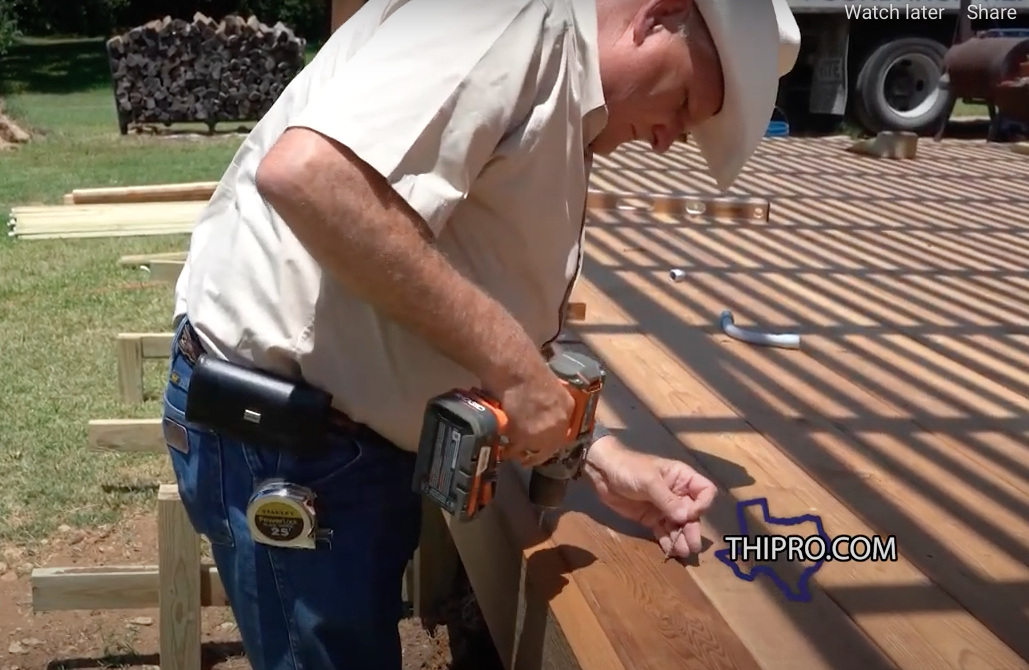While there are more options than ever for decking, we take a look at the upsides and downsides of the three leading contenders you'll be considering when planning your deck.
Pressure-Treated Lumber
Pros:
It's affordable, readily available, and easy to cut and fasten with nails or screws. Most is milled from southern yellow pine, and then chemically treated to resist rot, fungus and wood-boring bugs. PT Lumber is the #1 decking material sold today.
Cons:
PT lumber is not very dimensionally stable, so it has a tendency to crack, split and warp. Routine maintenance is necessary to prolong the life and look of the deck. This could mean an annual power washing and an application of stain or wood preservative every two or three years. Jim's preferred stain and sealer is Ready Seal.
Redwood & Cedar
Pros:
It's the real deal. The choice of purist because of its rich color and natural beauty, and because it isn't soaked in chemicals or preservatives. Both species contain tannins and oils that make them naturally resistant to rot, decay and voracious insects.
Cons:
Redwood and cedar each cost at least three times more than pressure-treated lumber. Redwood and cedar require an annual power washing and coat of finish every three to four years. You will also need to apply a water-repellant wood preservative to reduce checking (fine splits). Jim's preferred stain and sealer is Ready Seal.
Composites and Plastic Lumber
Pros:
Fastest growing portion of the decking material market today. Composites, like Trex, TimberTech, CorrectDeck, and Veranda, are composed primarily of wood fibers and recycled plastic. The result is a druable board that resists splinters, warping, rotting or splitting.
Plastic lumber, like Azek Deck, ForeverDeck and Leisure Decking, is made from 100 percent plastic (recycled and/or virgin); it contains no wood fibers. It, too, is highly resistant to staining and decay, and free of knots, cracks and splinters. Prices vary, but composites are typically less expensive than plastic lumber. They're extremely low-maintenance and never need to be sanded, refinished or stained.
Cons:
With composites Jim typically recommends 12-inch centers as the composite boards will sag over time in our hot climate. So, if you want to switch your present deck top boards from wood to composite you will likely also have to redo or add centers. Mold and mildew can grow in shady, damp areas of the deck, and some composites can eventually show signs of decay, which makes sense since they are partly wood.
They just aren’t real wood.
What did Jim use on his deck?
Jim went with cedar finished off with Ready Seal. Watch the video here:

